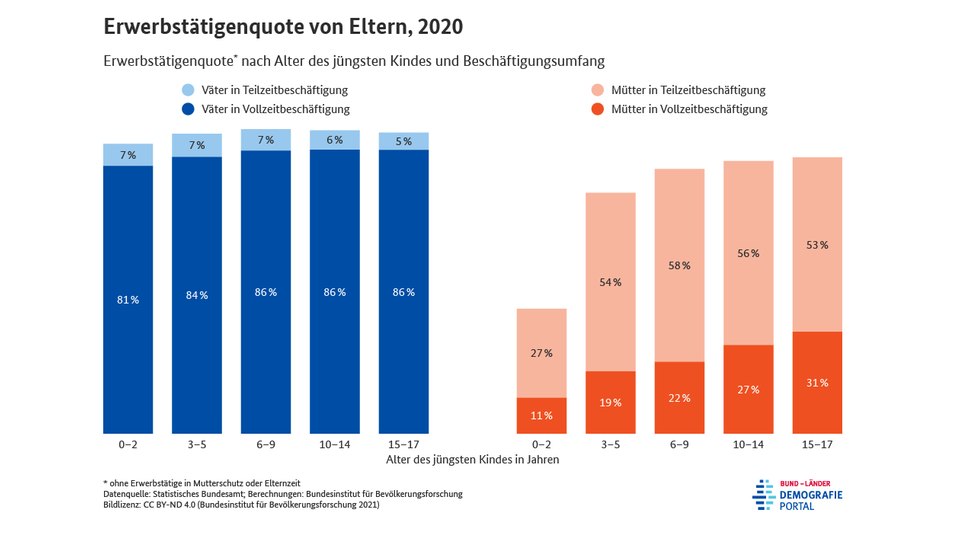At 18 percent, the German gender pay gap is particularly high in an EU comparison. How does this happen? And how could that change? The most important thing about Equal Pay Day.
Previously, if a woman earned less than her work colleague in the same position, then employers could justify it with their negotiating skills. Several women in Germany have complained about this. Most of them were dealt with with verdicts – only one got the right, was paid 14,500 euros by the employer and also received compensation for the violation of rights. In February, a judge in Erfurt made a landmark decision. Negotiating skills no longer count as an argument when a man earns more than his colleague.
It is now easier for women to demand what is theirs: equal pay. The gap between wages – also known as the gender pay gap – does not close automatically. This is commemorated by Equal Pay Day on March 7th this year. In Germany, women earn 18 percent less than men. The value is calculated annually by the Federal Statistical Office and has fallen in recent years. The traffic light government wants to further reduce the gap by 2030, to 10 percent. How realistic is that? And why do women earn less than men in the first place? The most important questions and answers about the gender pay gap:
What is the Gender Pay Gap?
The Gender Pay Gap describes the difference in earnings between women and men per hour worked. In Germany, the value has been calculated since 1995. A distinction is made between the adjusted and unadjusted gender pay gap. Depending on which factors are taken into account in the calculation, the wage difference will be higher or lower. The fact that the work of women and men is rewarded differently is not only related to discrimination, but also has structural reasons. The International Labor Organization mentions, among other things, training, qualifications and working hours.
Why two values for the wage gap?
At the unadjusted gender pay gap will compare the gross salaries of men and women overall. “This means that the earnings of board members, geriatric nurses and secretaries are included here in equal measure,” explains Leonie Schröder, research associate in the area of earnings statistics at the Federal Statistical Office. (Retirement) part-time work, part-time employees and trainees are also taken into account. The unadjusted gender pay gap is currently 18 percent and shows the average difference in earnings between the sexes regardless of characteristics such as position or qualifications.
The adjusted gender pay gap is methodologically more demanding because individual data from the employees must be queried for this purpose. It has been collected every four years from 2004 to 2021. Since last year, it has also been calculated annually and for the individual federal states. The difference in earnings between men and women with comparable characteristics is recorded.“With the adjusted gender pay gap, we look at the causes of the earnings gap. Measurable wage-determining differences between women and men are largely eliminated here. This gives us the earnings gap between women and men with approximately comparable characteristics. What is missing in our survey, however, is is, for example, information on career breaks,” says Schröder. With this information, the value would probably be even lower. The adjusted gender pay gap should therefore not be equated with discrimination because it compares the sexes with comparable position and qualifications. The adjusted gender is currently Pay gap at seven percent.
“Both values have different expressiveness, but also their right to exist,” says Schröder. The unadjusted gender pay gap is also about access barriers to the labor market. “With the adjusted gender pay gap, we can identify the causes of the different earnings.”
The statisticians use the gross hourly wage to calculate both values, because the monthly or annual earnings would falsify the statistics due to the different scope of employment.
How does Germany fare in an international comparison?
Globally, the gender pay gap is 20 percent – women earn a fifth less than men. However, this value varies depending on the country and region – even within Europe. The pay gap in Germany is very high compared to other European countries. According to the statistics platform Eurostat, Germany ranks fourth from last with 18 percent. The gender pay gap is highest in Latvia (22.3 percent) and lowest in Luxembourg (0.7 percent).
“This is partly due to the fact that the labor market participation of women in some countries is lower than in Germany,” admits Schröder. The few employed women in Italy, for example, work in better-paid areas and positions. Although this lowers the gender pay gap, it basically does not change anything in terms of equal rights and distribution of women and men on the labor market. The gender pay gap is therefore difficult to compare across countries.
How is the gender pay gap calculated?
The Federal Statistical Office calculates the wage gap on the basis of wage slips from around 58,000 companies in Germany from the month of April. “April is the first month of the year without seasonal effects,” says Schröder. Therefore, data from the month are considered particularly representative. In addition to seasonal effects, the public administration, defence, social security, fisheries and agriculture sectors are also excluded from the calculation.
In which sectors is the wage gap the greatest?
“At 27 percent, the gender pay gap is highest in the banking and insurance sector,” says Schröder. In the information and communications sector, the figure is 23 percent, and in tax and business consulting it is 20 percent. Schröder suspects: “This may have something to do with the fact that banks and insurance companies, for example, are male career domains.” Management positions are predominantly occupied by men. The value is also high for freelancers, scientific and technical services.
According to the microcensus, women are mainly employed in trade, hospitality, education, health and social work, art, entertainment and recreation. Within these economic sectors, the proportion of women is 49 percent.
Why does the gender pay gap increase with age?
“The gender pay gap could increase with age because women keep interrupting their careers in the course of their working life,” says the statistics platform Eurostat. This is also confirmed by data from the demography portal. In 2020, every second employed woman worked part-time. For men it was only one in eight. Almost half of all women surveyed stated that they worked part-time due to personal or family commitments, while only eleven percent of men said so. Most of them (25 percent) worked part-time because of training or further education, among women it is seven percent.
The statisticians of the Federal Statistical Office say that women’s earnings stagnate after the birth of their first child, “while men’s rise quite sharply”. “Men then seem to have more careers and achieve higher earnings,” says Schröder. Here, too, the figures show that men work an average of more than 80 percent full-time, regardless of the age of their (youngest) child.

More than 50 percent of working women with children remain in part-time employment. “But there are also many women who work part-time and would like to work more hours. One reason for the high part-time rate could be the lack of all-day care for children,” says the demography portal.
Are there differences between the federal states?
In 2022, the Gender Pay Gap by federal state was surveyed for the first time. The average gender pay gap is highest in Baden-Württemberg at 27 percent and lowest in Saxony-Anhalt (nine percent). If you look at the adjusted value, the picture changes: Brandenburg takes the inglorious first place with nine percent, while the wage difference between men and women with comparable qualifications, training and position is smallest in Schleswig-Holstein at four percent.
“In Brandenburg, Mecklenburg-Western Pomerania and Saxony-Anhalt, the adjusted gender pay gap is larger than the unadjusted one,” is the conclusion of the study. This means that women in these federal states have qualities that justify higher pay.
Will women and men eventually earn the same amount?
The traffic light has set itself the goal of reducing the unadjusted gender pay gap to ten percent by 2030. According to Schröder, there are certain factors that could affect the difference in earnings over the next few years: “The baby boomers who tend to have more traditional role models are now retiring. Those who are less pronounced in these role models are moving up.” But the structures would also have to change for this. In concrete terms, this means: expanding childcare, filling management positions with more women, higher salaries in typical women’s jobs.
In a study, the statisticians were able to show how a higher minimum wage and earnings surcharges for women affect the gender pay gap. Women and men benefit equally from the minimum wage increase. According to the simulation, if the minimum wage were 15 euros, the unadjusted gender pay gap could drop to 17 percent. The author of the study suggests increasing the minimum wage in areas of the economy that are particularly heavily occupied by women, but the simulation also shows that an increase in the minimum wage in areas occupied by women has only a small impact on the unadjusted gender pay gap.
Earnings premiums for women of one euro per hour would reduce the gender pay gap to 15.5 percent. “A nationwide increase in women’s gross hourly earnings (…) has a greater impact on the gender pay gap than raising the statutory minimum wage (…) for all sectors,” says the simulation report. In order to achieve the federal government’s goal of reducing the gender pay gap to 10 percent by 2030, women’s gross hourly earnings would have to be increased by EUR 2.20. However, that would be the least gender-equitable measure.
In a study, the International Labor Organization advocates pay transparency legislation. It has already been introduced in several countries, such as Canada, Chile, the United States, but also in some EU countries. This is a tool to control the payment of women and men. Employees should have access to payment levels, for example.
In Germany there is something similar in a weakened form: the federal government introduced the so-called Pay Transparency Act in 2017. Employers must inform their employees on request about the criteria of their payment. Private employers must also regularly disclose their pay structures and prepare status reports on equal pay.
However, critics fear that the men’s salaries could be reduced as a result of the transparency.
Sources: , , , , ,
Source: Stern




